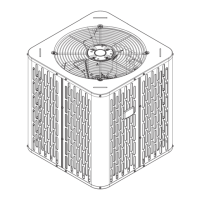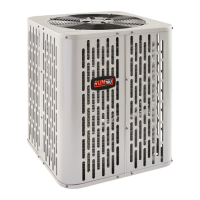Do you have a question about the Trane A4HP4018D1000A and is the answer not in the manual?
Details the physical dimensions and weight of various heat pump models.
Identifies the location of key service valves on the outdoor unit.
Specifies maximum total and vertical lengths for refrigerant lines.
Provides recommendations for optimal outdoor unit placement for reliability.
Offers precautions for installing units in cold weather with snow/ice.
Instructions for checking and preparing the unit before installation.
Guidelines for installing the unit on a support pad.
Details line sizes and service valve connection sizes for different models.
Explains factory charge details and verification methods.
Prompts for recording line length and vertical change for later use.
Emphasizes insulation requirements for the vapor line.
Precautions for using existing refrigerant lines during retrofit.
Guidelines to prevent noise from vibration transmission via refrigerant lines.
Step-by-step instructions for brazing refrigerant lines.
Procedure for pressurizing lines and checking for leaks.
Steps for evacuating refrigerant lines and indoor coil using a micron gauge.
Instructions for opening the gas service valve.
Procedure for opening the liquid service valve, with a warning.
Table showing maximum wire lengths for low voltage wiring based on gauge.
Diagrams illustrating low voltage wiring for heat pump and AC systems.
Details on defrost control settings and checkout procedures.
Information on high voltage power supply requirements and safety.
Guidance on installing a separate disconnect switch for high voltage.
Requirements for grounding the outdoor unit.
Step-by-step guide for starting up the installed system.
Instructions for taking necessary temperature measurements for charging.
Method for subcooling charge adjustment when outdoor temp is above 55°F.
Method for charging in heating mode when outdoor temp is below 55°F.
Steps to calculate refrigerant charge using the weigh-in method.
Lists procedures for final operational checks and system checkout.
Table of system faults, their causes, and troubleshooting steps.












